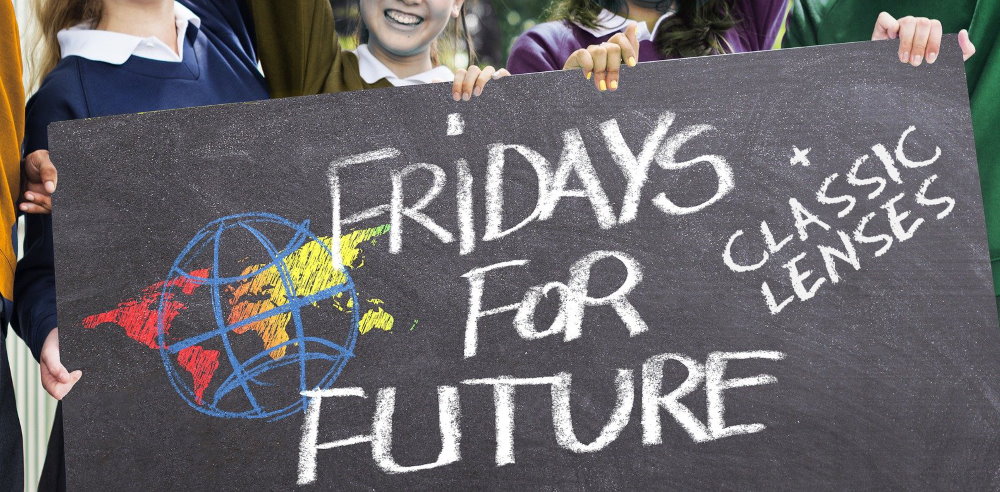I dare! Shooting with 2nd-hand lenses and reducing my CO2 footprint — Greta would love Classic Lenses!


The Sony FE 28-70mm f/3.5-5.6 OSS is the standard kit lens for all Sony A7 series full-frame cameras. This kit lens is respected as one of the better ones and has received some recommendations. This Sony lens is anything else than a shitty kit lens.
Ken Rockwell is saying: “For under $400, it works surprisingly well … It’s super-sharp in the center where it actually matters, even at 42 megapixels.” Look at Ken’s detailed lens review here: https://www.kenrockwell.com/sony/28-70mm.htm
For a motivated photographer, this kit lens should be completed by some prime lenses with a higher image quality. This review looks at how some inexpensive classic prime lenses could fulfill that need without creating a new CO2 footprint. Another positive side effect is saving an awful lot of money compared to buying a couple of new prime lenses (approx. EUR 200 vs. EUR 1,100).

Do classic prime lenses fulfil the expectation that they will significantly improve the image quality compared to the Sony FE 28-70mm kit lens?
The following classic prime lenses were compared to the Sony kit lens for A7 series full frame cameras:
- Minolta MD W.ROKKOR 28mm f2.8 (approx. EUR 60, made in 1982)
- Canon FD 35mm f3.5 S.C. (approx. EUR 50, made in 1977)
- Minolta MC ROKKOR-PF 50mm f1.7 (approx. EUR 30, made in 1975)
Review Results
A CO2 friendly geothermal power plant was used as the subject to shoot the review photographs, all with aperture f8, which is where the kit lens and the classic prime lenses tend to have their best image quality (the kit lens more to f5.6, the classic prime lenses more to f11).

The building used for the photo shootout is the geothermal power plant in the municipality of Grünwald, south of Munich, Germany, which you can find here:
28mm comparison at aperture f8 and center (kit lens left, classic lens right)
Please excuse that the following comparison photos are not 100% aligned in the dual-image viewer. When I have more time, I will align the photos more accurately. You can move the slider to compare the kit lens photos with the classic lens photos:
[twenty20 img1=”3786″ img2=”3793″ offset=”0.5″ before=”Sony FE 28-70mm f3.5-5.6 OSS” after=”Minolta MD W.ROKKOR 28mm f2.8″]28mm comparison at aperture f8 and corner (kit lens left, classic lens right)
[twenty20 img1=”3815″ img2=”3819″ offset=”0.5″ before=”Sony FE 28-70mm f3.5-5.6 OSS” after=”Minolta MD W.ROKKOR 28mm f2.8″]35mm comparison at aperture f8 and center (kit lens left, classic lens right)
[twenty20 img1=”3797″ img2=”3912″ offset=”0.5″ before=”Sony FE 28-70mm f3.5-5.6 OSS” after=”Canon FD 35mm f3.5 S.C.”]35mm comparison at aperture f8 and corner (kit lens left, classic lens right)
[twenty20 img1=”3823″ img2=”3827″ offset=”0.5″ before=”Sony FE 28-70mm f3.5-5.6 OSS” after=”Canon FD 35mm f3.5 S.C.”]50mm comparison at aperture f8 and center (kit lens left, classic lens right)
[twenty20 img1=”3855″ img2=”3914″ offset=”0.5″ before=”Sony FE 28-70mm f3.5-5.6 OSS” after=”Minolta MC ROKKOR-PF 50mm f1.7″]50mm comparison at aperture f8 and corner (kit lens left, classic lens right)
[twenty20 img1=”3831″ img2=”3837″ offset=”0.5″ before=”Sony FE 28-70mm f3.5-5.6 OSS” after=”Minolta MC ROKKOR-PF 50mm f1.7″]Why no comparison of lens distortion, vignetting and chromatic aberration?
I decided not to compare lens distortion, vignetting and chromatic aberration because they can be easily fixed by good graphic editors, such as Photoshop from Adobe or Affinity Photo from Serif, in my opinion. On the other hand, missing image information due to low sharpness cannot be added afterwards; it is lost forever.
Cost considerations
The cost for the three classic lenses in total is EUR 200 for the 28mm / 35mm / 50mm classic prime lenses including lens adapters. The cost is approx. EUR 1,100 for three modern Sony prime lenses (approx. EUR 380 for the Sony SEL 28F20, EUR 530 for Sony SEL-35F18F, EUR 190 for Sony SEL-50F18F). Don’t forget that the classic lenses are the used ones aged 30+ years, and no CO2 is created in the production of modern prime lenses.
Rundown
The classic prime lenses above, which were compared to the Sony kit lens, deliver a dramatic improvement in image quality regarding sharpness and contrast in the center and especially in the corner of the photos.
One might argue that the modern prime lenses would perform better in sharpness and image contrast than the classic lenses. Therefore, I compared the 40+ years old Minolta MC ROKKOR-PF 50mm f1.7 classic lens with the sharpest of all modern Canon EF 50mm lenses, the Canon EF 50mm f1.8 STM here;
FACT or FAKE: Cheap classic lens sharper than Canon EF 50mm f1.8 STM?
Final remarks
Be aware, though, that the classic lenses are fully manual for focus and aperture setting. Also, some classic lenses do not perform well because of fungus, haze or balsam separation, and/or the lens might have been dropped or been treated badly. Look at the Classic Lens Buying Guide and 10-Points Checklist for more details here:
Better not to end up like Jan Eufinger with his Hanimex Hanimar 28mm f2.8, “probably the worst lens of the world“:
https://www.youtube.com